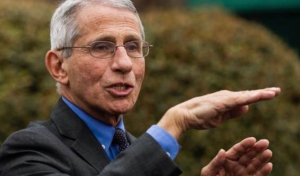‘Miasma’ is that one word which infuriates infectious diseases doctors like no other. For more than 2,000 years, it has misdirected medicines and medics. Derived from the Greek word for pollution, it is usually depicted as green in colour in cartoons.
Hippocrates first proposed the idea. “Whenever many men are attacked by one disease at the same time, the cause should be assigned to that which is most common, and which we all use most. This it is which we breathe in,” he wrote.
Also Read | Alaska allows hospitals to ration care amid COVID spike
Although a brilliant observation, it is still wrong. The observation indicated that something we share is causing disease – notably air – rather than human-to-human contagion.
A new paper argues that the western medical profession’s centuries-long battle against miasma theory initially blinded it to the fact that Sars-CoV-2 was airborne.
“As a result, a whole string of precautions, including the wearing of masks and the better ventilation of hospitals, schools, airports and other public spaces, were tragically and unnecessarily delayed,” it says.
Entitled Echoes Through Time: The Historical Origins of the Droplet Dogma and its Role in the Misidentification of Airborne Respiratory Infection Transmission, the paper is co-authored by over 20 leading academics from across the world.
“Resistance to the idea of airborne spread of a respiratory infection is not new,” says the paper. “It has occurred repeatedly over much of the last century and greatly hampered understanding of how diseases transmit.
“The slow and haphazard acceptance of the evidence of airborne transmission of Sars-CoV-2 by major public health organizations contributed to a suboptimal control of the pandemic.”
Only now – 160 years after John Snow – has there finally begun a new “paradigm shift in the understanding of disease transmission”, said the authors.
“Not only are respiratory diseases not transmitted exclusively by droplets, but also it is likely that many or most respiratory diseases have an important airborne component.”
“This does not mark a return to past miasmatic ideas, but a more informed understanding of airborne transmission.”
Professor Jose-Luis Jimenez, lead author of the paper and a chemistry professor at the University of Colorado, said that the paper explains an error that has been taught in medical schools for centuries.
Charles Chapin, an American doctor, proved pathogens could spread via exhaled droplets in 1990. However, it was accepted wrongly as proof that more general aerosol transmission did not exist.
“Droplet borne infection freed us from the specter of infected air – a specter which has pursued the race from the time of Hippocrates”, declared Dr Chapin at the time.
“Droplets on surfaces is very convenient for people in power – all of the responsibility is on the individual,” he said. “On the other hand, if you admit it is airborne, institutions, governments and companies have to do something.”
As for Sars-Cov-2, The World Health Organization (WHO) and the US Centers for Disease Control, have accepted that aerosol spread is crucial.
In fact, experiments on both hamsters and ferrets went on to prove that Sars-Cov-2 can be transmitted via aerosols.
Professor Jimenez and his co-authors acknowledge this but say that airborne transmission “doesn’t have to be scary”.
“We can do lots of things to diminish the fear, and many of them are free – the most effective is meeting outdoors, opening the windows, even talking less loudly,” he says.
Dr Julian Tang, associate professor of respiratory sciences at the University of Leicester Hospitals, said now that it is proven to be airborne, major investments are important to update the ventilation systems in Britain’s hospitals.
“I’ve worked in hospitals in Singapore, Hong Kong and Canada. And NHS hospitals are falling apart,” he said.
“This hospital is really something to behold,” he says. “Isolation rooms have glass walls and sliding doors so nurses can see inside – without needing to physically go inside. They have reversible airflow ventilation systems that can provide negative or positive pressure.”
“The portable air purifiers and UV lights now being used in some NHS hospitals to try and stop the spread of Covid through their wards was “Heath Robinson” by comparison,” he said.







